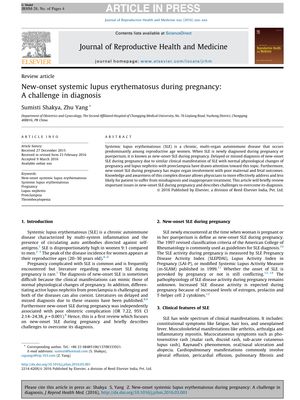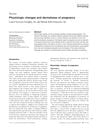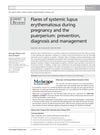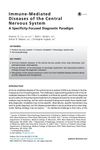New-Onset Systemic Lupus Erythematosus During Pregnancy: A Challenge in Diagnosis
April 2016
in “
Journal of Reproductive Health and Medicine
”

TLDR Diagnosing new systemic lupus during pregnancy is hard but important for the health of the mother and baby.
The document from 2016 outlines the diagnostic difficulties of new-onset systemic lupus erythematosus (SLE) during pregnancy, due to symptom overlap with normal pregnancy changes and the similarity between lupus nephritis and preeclampsia. It stresses the significance of differentiating these conditions for better maternal and fetal outcomes, as new-onset SLE during pregnancy has an odds ratio of 7.22 for obstetric complications. The article reviews clinical features and diagnostic criteria, noting that lupus nephritis can be identified by autoantibodies, hypocomplementemia, and active urinary sediment, while preeclampsia is associated with hyperuricemia. Renal biopsy is the definitive diagnostic tool for lupus nephritis but is not recommended after 32 weeks of gestation. The document references studies, including one by Xu et al. with 17 new-onset SLE cases during pregnancy, resulting in three maternal mortalities and one live birth, and another by Chen et al. with nineteen deliveries, resulting in only nine live births. It concludes that new hematological or renal symptoms during pregnancy that do not respond to treatment should be taken seriously for proper assessment and management.





